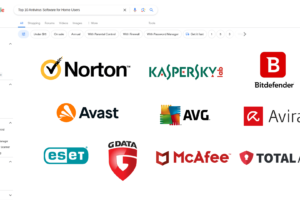A Comprehensive Guide to Employee Training
Employees are often the first line of defense against cyberattacks. By equipping them with the knowledge and skills to recognize and prevent threats, organizations can significantly enhance their cybersecurity posture. This article delves into the importance of cybersecurity awareness training for employees and provides practical guidelines for developing and implementing effective programs.
The Critical Role of Employee Training
- Human element: Employees are often the weakest link in a security chain, inadvertently introducing vulnerabilities or falling victim to social engineering attacks.
- Proactive defense: By training employees to identify and report suspicious activity, organizations can detect and respond to threats more quickly.
- Cultural shift: Effective training can foster a security-conscious culture within the organization, encouraging employees to take ownership of cybersecurity and adopt best practices.
Key Components of Cybersecurity Awareness Training
- Phishing awareness: Educate employees about common phishing tactics, such as email spoofing, spear phishing, and smishing, and provide them with tools to recognize and report suspicious messages.
- Social engineering: Teach employees about social engineering techniques, including pretexting, tailgating, and quid pro quo, and how to avoid falling victim to these attacks.
- Password security: Emphasize the importance of using strong, unique passwords and avoiding sharing them with others.
- Data security: Train employees on proper data handling practices, including data classification, access controls, and secure disposal methods.
- Mobile device security: Educate employees about the risks associated with using personal devices for work purposes and provide guidelines for securing mobile devices.
- Incident response: Teach employees how to recognize and report security incidents, and provide them with guidelines for responding to breaches.

Effective Training Delivery Methods
- Interactive workshops: Conduct interactive workshops that include role-playing exercises, simulations, and group discussions to engage employees and reinforce key concepts.
- Online modules: Develop online training modules that employees can complete at their own pace, providing flexibility and convenience.
- Gamification: Incorporate gamification elements into training programs to make learning more enjoyable and engaging.
- Regular refreshers: Conduct regular refresher training sessions to keep employees updated on emerging threats and best practices.
Measuring Training Effectiveness
- Pre- and post-tests: Assess employees’ knowledge and understanding of cybersecurity concepts before and after training to measure improvement.
- Phishing simulations: Conduct phishing simulations to test employees’ ability to recognize and report suspicious emails.
- Employee feedback: Gather feedback from employees to identify areas for improvement and tailor future training sessions.
Tailoring Training to Your Organization
- Risk assessment: Identify your organization’s specific security risks and tailor training content accordingly.
- Employee roles: Consider the different roles and responsibilities of your employees and provide training that is relevant to their specific needs.
- Cultural factors: Take into account the cultural context of your organization and adapt training materials to resonate with employees.
Integrating Cybersecurity Awareness into Company Culture
- Leadership buy-in: Gain support from senior leadership to demonstrate the importance of cybersecurity and create a culture of security awareness.
- Security champions: Appoint security champions within your organization to promote cybersecurity best practices and serve as resources for employees.
- Rewards and recognition: Recognize employees who demonstrate exemplary security practices to reinforce positive behavior.
Addressing Common Challenges
- Limited resources: Maximize the effectiveness of your training program with limited resources by focusing on critical areas and leveraging online tools and resources.
- Employee resistance: Overcome resistance to training by making it engaging, relevant, and accessible.
- Time constraints: Incorporate cybersecurity training into existing employee development programs or offer flexible training options.
By investing in comprehensive cybersecurity awareness training, organizations can empower their employees to become active participants in protecting their digital assets. A well-trained workforce is a valuable asset in the fight against cyber threats, helping to mitigate risks and safeguard sensitive information.
















Add Comment